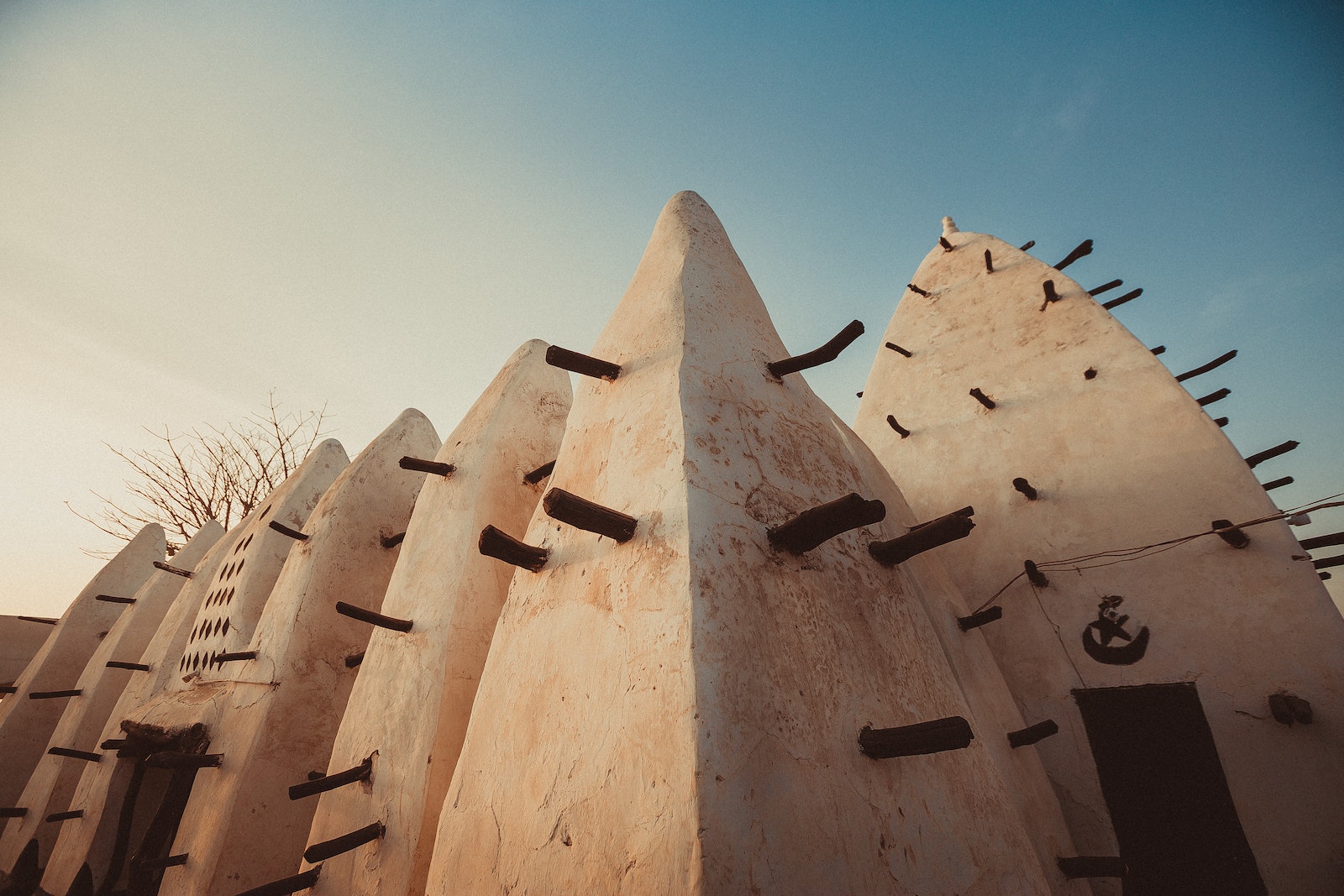In the village of Larabanga in Ghana’s Northern Region, there is a historically significant mosque called the Larabanga Mosque. It is regarded as one of the most significant examples of West African Sudano-Sahelian architecture and is one of the oldest mosques in West Africa.
The 15th century mosque was constructed using mud and wooden poles. A conical tower with elaborate geometric motifs and a pointed spire on top is part of its distinctive architecture. The mosque’s interior, which features beautifully carved wooden beams and decorative plasterwork, is equally magnificent.
The mosque is a significant spiritual and cultural location for the neighborhood’s Muslim population. People travel from all over the world to see it, marvel at its distinctive architecture, and learn about its significance. A traditional Islamic school and various tombs of regional Islamic dignitaries are among the historical and cultural landmarks that surround the mosque.
Visitors to the Larabanga Mosque can take guided tours of the building and its environs, discover its significance in history, and take part in regional celebrations and festivals. The mosque is a well-liked spot for both cultural and ecotourism because it is close to a number of natural sites, including the Mole National Park.
The Larabanga Mosque is a distinctive and significant site that provides tourists with an enthralling window into the rich cultural legacy of Ghana’s Muslim community. The mosque is a must-see location for anybody visiting Ghana because of its magnificent architecture, extensive history, and significant cultural value.



